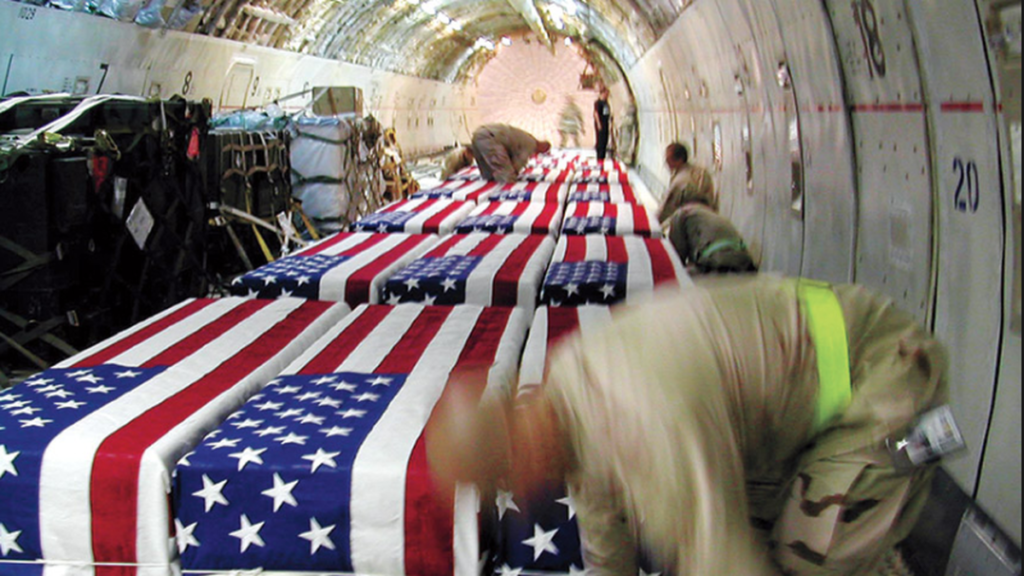

.
In 1991, when his gruesome photo of a dead Iraqi soldier burnt in tank during the Gulf War was published, Ken Jarecke remarked: “If we’re big enough to fight a war, we should be big enough to look at it.” For four presidential administrations — from the Gulf War until 2009 – there was a ban on the news media photographing the flag-covered caskets of American soldiers killed in war, imposed by the military, which viewed that the media had lost them the war in Vietnam.
The ban became an issue on Sunday, April 18, 2004, The Seattle Times published a large front-page photograph depicting several flag-covered coffins inside a transport plane, bound for Dover Air Force Base in Delaware, the largest U.S. military mortuary. The photo had arrived at a particularly fraught moment for the military, as the American occupation of Iraq bogged down and the death toll rose alarmingly. Amid a growing insurgency, widespread uprisings, and a major crisis in Fallujah, that April would turned out to be the deadliest month for U.S. troops in Iraq since the war began.
The photos came from no photojournalist, but from Tami Silicio, a 50-year old civilian cargo worker, working the night shift at Kuwait International Airport for Maytag Aircraft, a military contractor responsibility for shipping supplies (including the dead bodies) to and from Iraq.
Silicio shared the photos with a friend, a fellow military contractor with whom she had worked in Kosovo, who then forwarded it to Barry Fitzsimmons, photo editor at The Seattle Times. Fitzsimmons contacted Silicio for her permission to print the photo, which was readily granted.
![]()
Silicio maintained that she had no political objective in mind. She recalled how the aircraft interior felt like a shrine and how the staff went about their task securing the coffins with solemnity. As a mother who had lost a child herself (her oldest son died of a brain tumor, aged 19), she wanted to bring comfort to families, to “let the parents know their children weren’t thrown around like a piece of cargo, that they, instead, were treated with the utmost respect and dignity.”
Three days later after the photo ran, Silico and her husband, a co-worker who she recently married, were fired for having “violated Department of Defense and company policies.” When it appeared that she might be fired, Silicio told her friend: “I took that photo from my heart. I don’t care if they sent me home or if I have to work for $9 an hour the rest of my life to pay my mortgage.”
“I feel honored. The photo was honest. It captured the respect for the dead and that’s what it should have been about. That photo stirred up a whole lot of stuff around this nation. People’s emotions were touched.”
Silicio would prove to be prescient. Unable to get another contractor job and unable to keep up with her mortgage payments, she lost her home and struggled financially subsequently. In 2016, long after the ban was lifted, she looked back and stated that she did not regret her decision to allow publication of the photo.